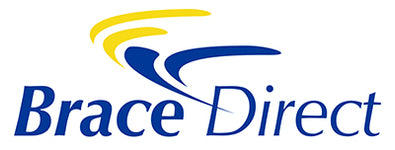
ACL & MCL Injuries: Understanding Ligament Damage & Recovery
Your knee’s ACL (anterior cruciate ligament) and MCL (medial collateral ligament) are essential stabilizers. When they’re stretched, sprained, or torn, you may face significant pain and ongoing instability. Whether you’re dealing with a sports injury, a sudden twist, or recovering from a surgical repair, using the right knee brace can help reduce pain, boost stability, and speed your path to healing.
Why ACL & MCL Injuries Occur
ACL and MCL injuries are among the most common knee ligament problems, typically caused by:
- Sudden Direction Changes: Pivoting or cutting moves in sports like basketball or football.
- Hyperextension or Hyperflexion: Forced bending or straightening that overstretches the ligaments.
- Direct Collision or Impact: Tackles, slips, or car accidents placing extreme force on the knee.
- Overuse & Repetitive Stress: Frequent strain or microtears from repetitive running or jumping.
- Post-Surgery Recovery: Repairs (ACL reconstructions, MCL sutures) often demand careful bracing.
Typical signs include instability or “giving way,” swelling, sharp pain during motion, and discomfort placing weight on the affected leg.

How Knee Braces Aid ACL & MCL Healing
Specialized braces offer ligament relief by:
- Hinged Support: Prevents excessive side-to-side or twisting motions that worsen ligament tears.
- Customizable Range of Motion (ROM): Lets you gradually increase knee flexibility during rehab while keeping stability.
- Compression & Alignment: Reduces swelling, holds the knee in a safe position, and eases tension on damaged ligaments.
- Safe Activity: Encourages a balanced weight distribution, so you can move with more confidence and less risk.
By stabilizing the knee and limiting harmful movements, braces accelerate healing and reduce the likelihood of recurring injuries.
Top Knee Braces for ACL & MCL Injuries
These recommended braces focus on stabilizing damaged ligaments, limiting re-injury, and relieving pain:

Brace Direct Deluxe Plus Size ROM Knee Brace
Designed for larger builds, this hinge brace offers adjustable range-of-motion settings to safeguard ACL/MCL repairs or injuries.
Shop Now
Brace Direct Hinged ACL Ligament ROM Knee Brace
Combining a robust hinge with adjustable flexion/extension stops, this brace shields the ACL/MCL from risky maneuvers while promoting gradual rehab.
Shop Now
Brace Direct Hinged Knee Brace
Provides moderate support for mild sprains or partial ligament tears, reducing pain and helping you stay active during recovery.
Shop NowReinforce Your Knee & Return to Action
Don’t let an ACL or MCL injury keep you off your feet. Our specialized knee braces offer stability, pain relief, and controlled movement—so you can heal smarter and safer. For a tailored fit, explore our Perfect Fit Promise or shop the entire ACL/MCL collection below.
Shop ACL & MCL Braces












